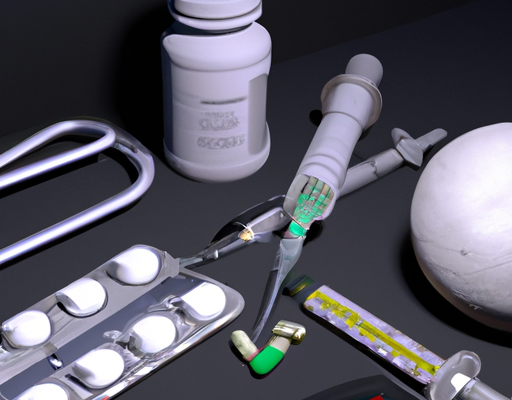Definition of contact dermatitis
Contact dermatitis is an inflammation of the skin that occurs when the skin comes into contact with an allergen or irritant. It is characterized by itchy red rash or bumps, which can usually be found on areas of skin that have direct contact with the allergen or irritant. Although a skin reaction can be caused by many things, the majority of contact dermatitis reactions can be attributed to allergies or sensitivities to certain chemicals, fabrics, soaps and other substances. Treatment of contact dermatitis can involve avoiding contact with the allergen or irritant and using topical medications to reduce inflammation. In more serious cases, systemic medications may be necessary to control the itching and rash associated with contact dermatitis.
Symptoms of contact dermatitis
Contact dermatitis is an inflammatory skin condition triggered by contact with certain irritants or allergens. It can cause a range of uncomfortable symptoms, including redness, itching, burning, swelling, and small welts on the skin. The area of skin that comes into contact with the irritant may become dry, scaly, and thickened. In extreme cases, it can even form blisters. Contact dermatitis is highly uncomfortable and can have a significant impact on people’s quality of life. Fortunately, it is possible to minimize the symptoms of contact dermatitis by avoiding irritants and allergens, as well as drying and cooling the skin after exposure.
Causes of contact dermatitis
Contact dermatitis is an inflammatory skin condition caused when the skin comes into contact with an allergen or irritant. It usually appears in the form of red, itchy welts or bumps, which can be very uncomfortable. Contact dermatitis is commonly caused by exposure to allergens such as poison ivy, certain metals, dyes, detergents, fragrances, and cosmetics. It could also be caused by exposure to irritants such as solvents, acids, and alkalis. Other possible causes of contact dermatitis include exposure to extreme temperatures, wetness, and friction. Contact dermatitis is also triggered by exposure to certain plants, fungi, and animals, as well as certain medications. In people with a history of allergies, contact dermatitis may be aggravated by stress and fatigue. Therefore, it is important to identify and eliminate potential allergens and irritants in order to prevent contact dermatitis welts.
Treatment of contact dermatitis
Contact dermatitis is an itchy and uncomfortable skin condition that can cause swelling, redness and painful bumps on the skin. Treatment for contact dermatitis focuses on providing relief from itchiness and inflammation, and preventing further exposure to skin irritants that cause the condition. Medicated creams, ointments and antihistamines are commonly used to help reduce inflammation and discomfort. Avoiding contact with known triggers, including detergents, fragrance, cosmetics and certain fabrics, is critical in managing contact dermatitis. If a trigger is not avoided, repeated flare-ups can lead to more severe symptoms and pain. Keeping the skin moisturized with unscented lotions and soaps can help minimize discomfort and reduce flare-ups during periods of high irritation. In more severe cases, doctors may prescribe systemic medications, such as prednisone, to provide relief.
Prevention of contact dermatitis
Preventing contact dermatitis should be the first line of defense. The clothes you wear, medical tape, metal jewelry, and other potentially irritating substances can cause contact dermatitis. To prevent contact dermatitis, you should wear loose clothing whenever possible to protect your skin from direct contact with potentially irritating fabrics. Pay close attention to what medical or adhesive tape you use and find out which one is not too irritating for your skin. Also, take time to clean your skin thoroughly each day, especially if you come in contact with products that lead to contact dermatitis. Avoid using a product for extended periods of time, as it is more likely to cause an allergic reaction. Finally, if you do develop welts, stay away from further contact with the allergen and consult a dermatologist for possible treatments.
Home remedies for contact dermatitis
When one has contact dermatitis, it can be difficult to know how to handle the situation. Although there are treatments available from doctors, many people prefer to use home remedies to relieve their symptoms. Luckily, there are plenty of natural remedies available. Applying cold compresses to the skin can reduce redness and inflammation, while adding oatmeal to your bath can help to soothe the skin. Some people find that applying aloe vera directly to the affected area helps to reduce itching and irritation. Adding some tea tree oil to your regular shampoo may also help to reduce symptoms of contact dermatitis. Additionally, avoiding contact with irritants and allergens that cause the condition is important in preventing flare ups.
Types of contact dermatitis
Contact dermatitis is a skin condition that occurs when the skin is exposed to an irritant or substance. This can result in a rash, inflammation, itching, and in some cases, blistering. It is important to know the different types of contact dermatitis in order to prevent it from occurring in the first place, or to know the best treatments for dealing with the problem. The two main types of contact dermatitis are irritant and allergic. Irritant contact dermatitis is caused when the skin is exposed to a chemical or physical irritant. This type of reaction occurs when an individual is exposed to substances for too long, or too often. Allergic contact dermatitis is caused when the skin is exposed to an allergen, such as poison ivy. The treatment for both types of contact dermatitis is generally avoidance of the irritant, although some cases can be treated with topical creams, antihistamines, and in some cases, steroids. Prevention is the best way to avoid contact dermatitis welts and to keep the skin healthy.
Questions to ask your doctor
When it comes to contact dermatitis welts, it’s important to ask your doctor questions to ensure you get the best treatment. Ask your doctor how long the welts are likely to last, what the best treatments options would be, and what the risks of not treating the condition are. If you have questions about the side effects of medications, it’s important to ask about them as well. Additionally, make sure to ask about any lifestyle changes that may need to be made to prevent recurrences of the condition. Finally, find out what kind of follow-up care is necessary in order to monitor the condition. Asking questions is an important step in getting the best treatment for contact dermatitis welts.





No Comments